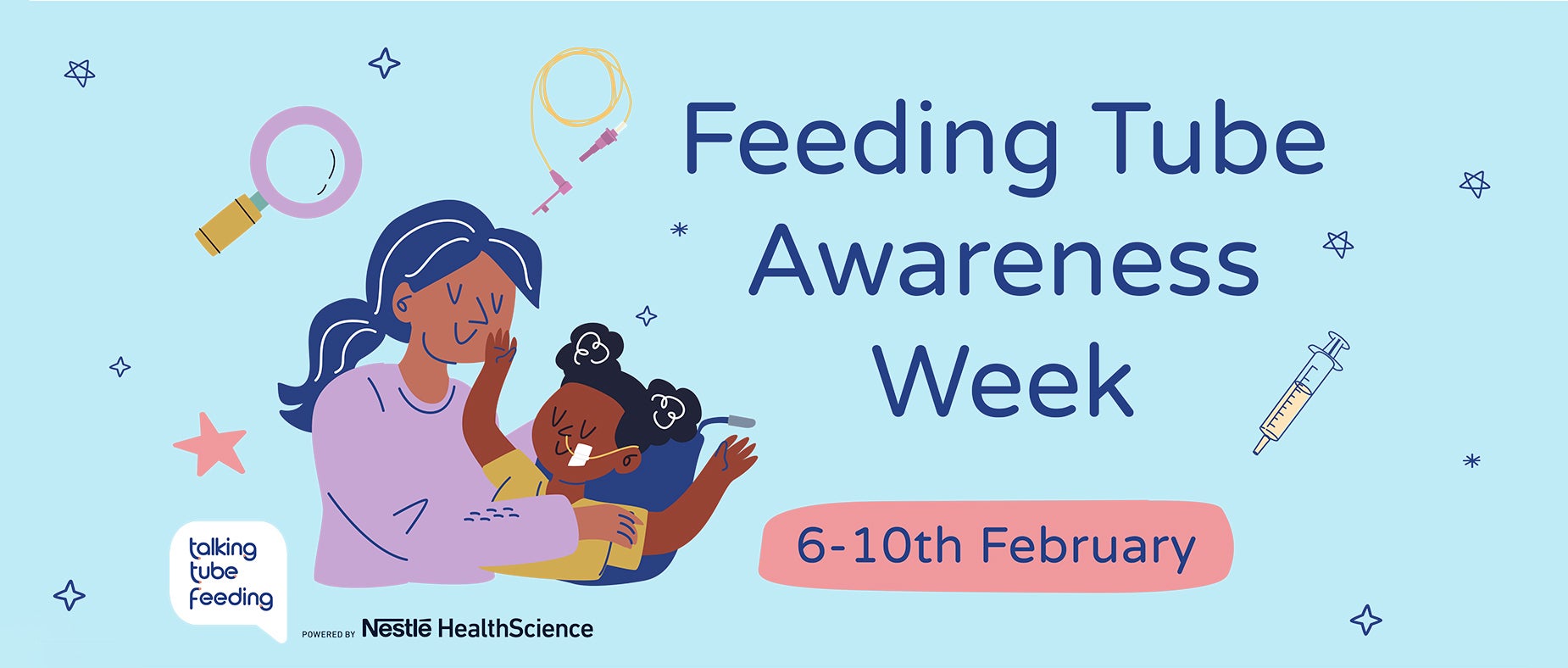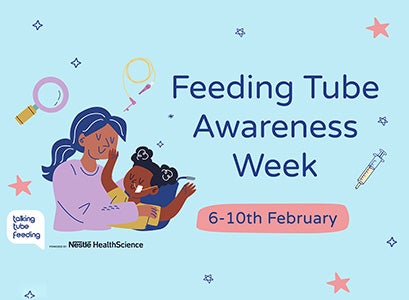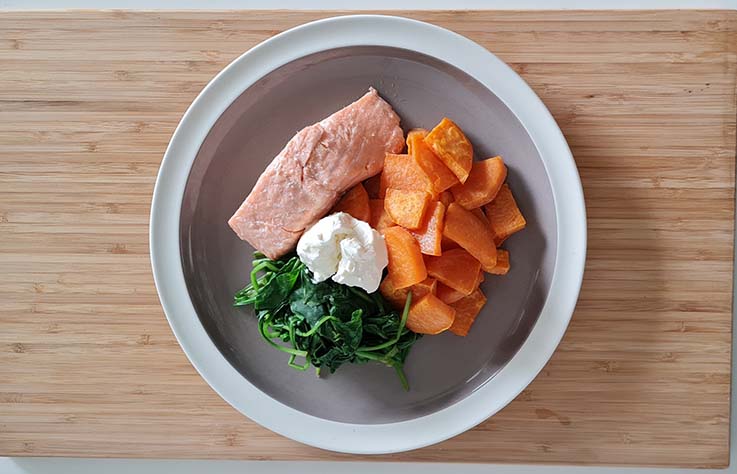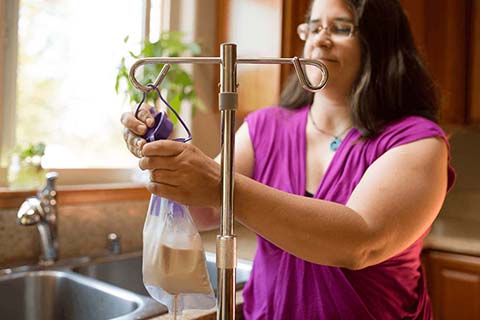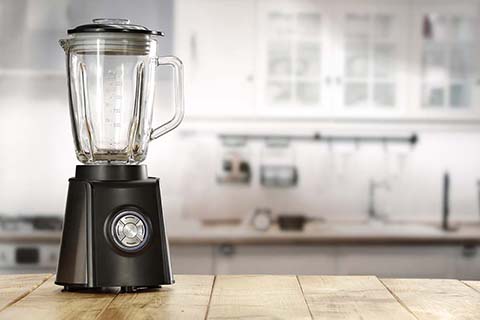Feeding Tube Awareness Week | initiating new conversations about what it means to tube feed
Educating those who are brand new to tube feeding and helping family and friends support individuals who tube feed.
Food plays an important role in everyone’s lives, yet meal times is something most of us take for granted. According to the BAPEN BANS report in 2011, an estimated 16,982 children and over 26,600 adults receive home tube feeding. This means they receive their nutrition through a feeding tube, either directly into their stomach or sometimes through their nose and into their stomach.
BAPEN. BANS: Annual BANS Report, 2011; Artificial Nutrition Support in the UK 2000-2010. 2011. Available at https://www.bapen.org.uk/pdfs/bans_reports/bans_report_11.pdf
What is tube feeding and why would someone need it?
Tube feeding may be required from birth, or it can be introduced later in life. Tube feeding is an efficient way of obtaining nutrition when required. There are several reasons why someone might require tube feeding, such as:
- They have experienced a trauma/injury and are in intensive care; they are dependent on a ventilator or are in an induced coma
- They have a long-term neurological condition, such as cerebral palsy
- They have a food disorder, such as avoidant/restrictive intake disorder (ARFID), and aren’t getting the right balance of nutrients for healthy development
- They have gastrointestinal issues, such as Crohn’s disease, ulcerative Colitis, gastrointestinal cancer or gastrointestinal complications due to trauma

How does tube feeding work?
Tube feeding can be either a short-term or long-term solution. Some people will have a spaghetti-like tube that goes through the nose and reaches the stomach or part of the small intestine (usually a short-term option). Others will have a tube directly inserted into their stomach or small intestine (usually a long-term option).
Dietitians play an important role in providing practical and individualised advice to help people manage tube feeding. Prior to a child or adult having a feeding tube inserted, a dietitian will work closely with a multidisciplinary health care team to decide on the most suitable method of feeding and type of feed – the individual and their families are involved in the decision-making process as much as possible too.
What goes in a feeding tube?
Finding the perfect feed isn’t always easy, and every person’s tube feeding set-up and journey is unique.
Standard practice involves using ‘commercial’ formula (also known as ‘milks’), breast milk or infant formula via a feeding tube. Formulas have been specifically designed to be nutritionally complete, meaning they contain all the nutrients an individual requires, and come in liquid or powder that needs to be mixed with water.
At the same time, there has been a growing interest in replacing formula with blended home-cooked meals. This interest not only stems from a bid to reduce gastrointestinal symptoms including reflux, constipation and retching, but to provide exposure to real foods and tastes. A blended diet approach uses whole foods, puréed to a single cream consistency and then given via a feeding tube. Blended diets aren’t suitable for everyone, so should be discussed with a healthcare team first. Some people choose to combine commercial formula and blended food.
To help inform a person’s tube feeding regimen, dietitians will carry out a nutritional assessment, which involves calculating a person’s nutritional requirements based on their age, height, weight, clinical conditions and blood results. This regimen can evolve over time if a person’s nutritional requirements change – so dietitians play a vital role in monitoring and adjusting as needed. Sometimes, formula can cause ‘intolerance’, which means people may experience vomiting, retching, diarrhoea, constipation and/or stomach pain, so it’s important to select a feed with the right balance that doesn’t cause an upset tummy.
How can people that don’t tube feed support those that do?
Tube feeding can become the focal point of someone’s life – particularly given the adjustments that may need to be made with day-to-day activities. However, many people can socialise, take part in sports, go to work and have relationships, just as anyone else would, so it shouldn’t be viewed negatively.
If you don’t know much about tube feeding or haven’t seen it first-hand, it can be difficult to know what to say or how to act around people who are tube-fed. Often people who are tube-fed can feel isolated, as many social occasions involve food. It’s therefore important to be compassionate and involve them as much as possible.

- Don’t stare when a person is administering a feed
- Offer help (sometimes it can be tricky to administer a feed in public)
- Discuss the preferences and feelings of a tube-fed person (some prefer not to sit at the dining table or be around food preparation, while others are happy to do so)
- Continue to invite people who are tube fed to social occasions involving food
If you’re keen to learn more about tube feeding, check out our glossary here or browse the other articles on our site.
Please share this article to help us raise awareness of tube feeding.And if you have any questions about tube feeding or suggestions for how, as a tube feeder, you could be better supported by family, friends or the public, email us at talkingtubefeeding@uk.nestle.com.

